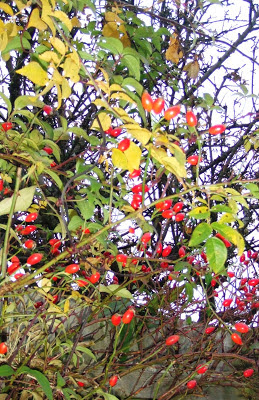The fifth of November
I love bonfire night and am so
pleased that Spennymoor, my home town, is one of the few places to hold its
annual firework display on 5th November, no matter which day of the
week it falls.
The bonfire used to be held in
Jubilee Park. My aunt would have baked potatoes
in the coal oven and we’d all set off for the celebrations with pockets stuffed
full of the hot potatoes which both warmed cold hands and were a delight to eat
while firework-watching. Once the excitement of the display was over we’d hurry
home to a feast of hot dogs and home-made toffee apples. Those were the days...
This year, however, the supper
will be pumpkin soup made from a pumpkin grown on the allotment.
 |
| Cinderella for the use of ... |
Spiced
Pumpkin Soup
Serves 4
600g
(1lb 5oz) pumpkin flesh, roughly chopped
2
celery sticks chopped
1
garlic clove ditto
1tsp
each of ground cumin and coriander
800ml
(1 pint 7fl oz) vegetable stock
200ml
(7fl oz) coconut milk
Put
pumpkin flesh into a food processor and whiz for 30 seconds until almost
smooth.
Add
celery, garlic and spices and whiz for another 30 seconds.
Empty
into a large pan.
Add
the stock and coconut milk, bring to the boil, cover and simmer for c15
minutes.
Remove
from the heat and blend until smooth.
Check
the seasoning and ladle into warmed soup bowls.
Sprinkle
with pumpkin seeds and freshly ground black pepper.
Serve
with crusty bread
We always used to burn our
garden rubbish on 5th November and it was amazing how many times
neighbours took the opportunity to volunteer extra items to add to the
conflagration! The ash contains potash and is excellent for sprinkling around
fruit trees. These days bonfires aren’t encouraged any more. Although still
allowed at the allotment, strict rules are enforced so very few allotmenteers
burn rubbish, preferring to compost as much as possible.
Beechwood
fires burn bright and clear
If
the logs are kept a year:
Chestnuts
only good they say
If
for years ‘tis stored away:
Birch
and firwood burn too fast,
Blaze
too bright and do not last.
But
ashwood green and ashwood brown,
Are
fit for a Queen with a golden crown.
Oaken
logs, if dry and old
Keep
away the winter’s cold:
Poplar
gives a bitter smoke,
Fills
your eyes and makes you choke:
Elmwood
burns like churchyard mould,
Even
the very flames are cold:
Applewood
will scent the room:
Pearwood
smells like flowers in bloom:
But
ashwood wet and ashwood dry,
A
King may warm his slippers by.
Anon
 |
| Tree man seen at The Floriade |
Bearing in mind the latest
threat to Britain’s
ash trees, we may all be very warm this winter!
































